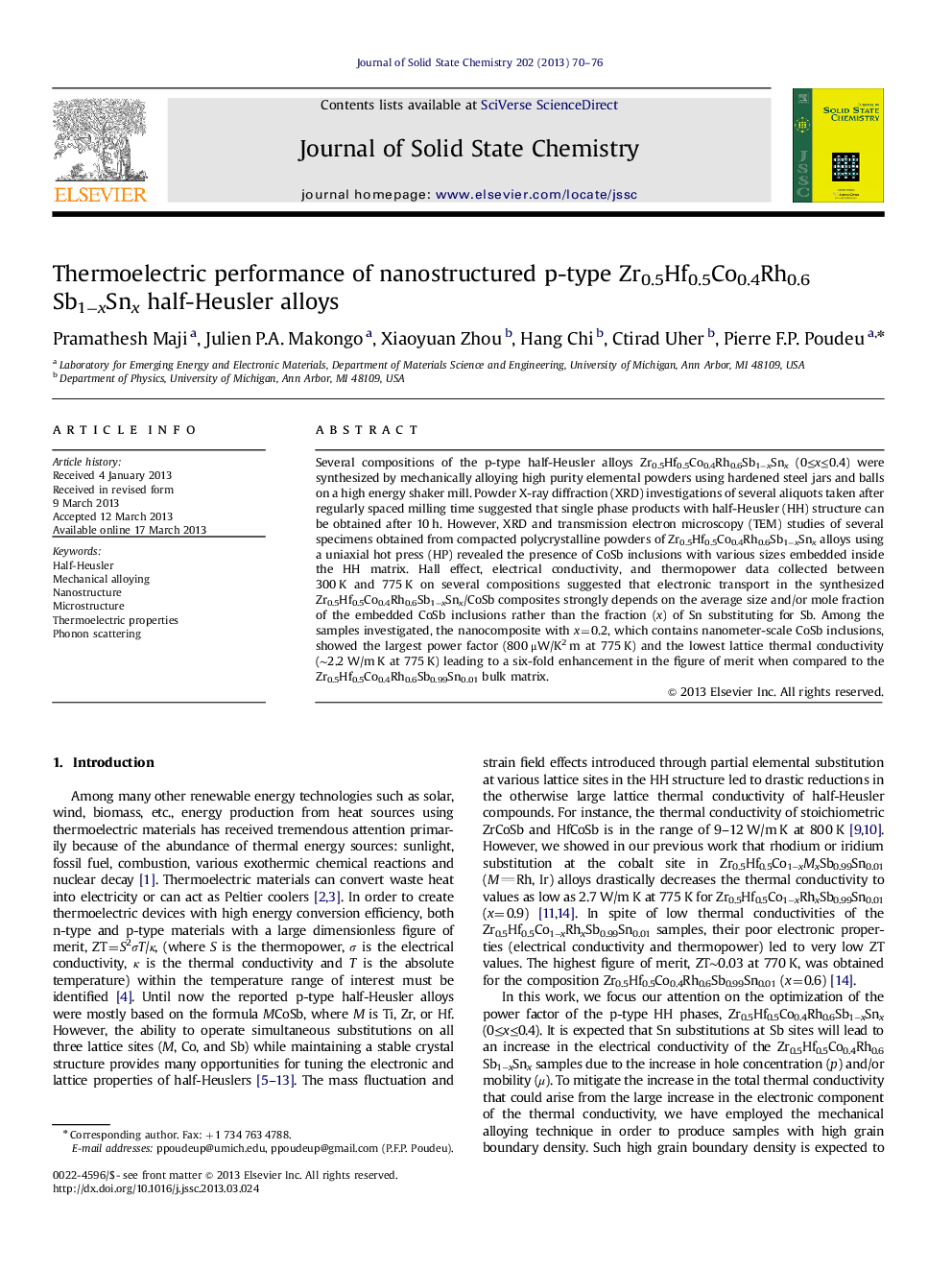| کد مقاله | کد نشریه | سال انتشار | مقاله انگلیسی | نسخه تمام متن |
|---|---|---|---|---|
| 1332248 | 1500114 | 2013 | 7 صفحه PDF | دانلود رایگان |

• The phase composition of half-Heusler (HH) alloy is very sensitive to the synthesis method.
• Mechanical alloying (MA) of elements results in bulk HH matrix with CoSb inclusions.
• CoSb nanoinclusions simultaneously boost the thermopower and carrier mobility with the HH matrix.
• The MA process reduces lattice thermal conductivity due to high density of grain boundaries.
Several compositions of the p-type half-Heusler alloys Zr0.5Hf0.5Co0.4Rh0.6Sb1−xSnx (0≤x≤0.4) were synthesized by mechanically alloying high purity elemental powders using hardened steel jars and balls on a high energy shaker mill. Powder X-ray diffraction (XRD) investigations of several aliquots taken after regularly spaced milling time suggested that single phase products with half-Heusler (HH) structure can be obtained after 10 h. However, XRD and transmission electron microscopy (TEM) studies of several specimens obtained from compacted polycrystalline powders of Zr0.5Hf0.5Co0.4Rh0.6Sb1−xSnx alloys using a uniaxial hot press (HP) revealed the presence of CoSb inclusions with various sizes embedded inside the HH matrix. Hall effect, electrical conductivity, and thermopower data collected between 300 K and 775 K on several compositions suggested that electronic transport in the synthesized Zr0.5Hf0.5Co0.4Rh0.6Sb1−xSnx/CoSb composites strongly depends on the average size and/or mole fraction of the embedded CoSb inclusions rather than the fraction (x) of Sn substituting for Sb. Among the samples investigated, the nanocomposite with x=0.2, which contains nanometer-scale CoSb inclusions, showed the largest power factor (800 μW/K2 m at 775 K) and the lowest lattice thermal conductivity (∼2.2 W/m K at 775 K) leading to a six-fold enhancement in the figure of merit when compared to the Zr0.5Hf0.5Co0.4Rh0.6Sb0.99Sn0.01 bulk matrix.
CoSb nanoinclusions embedded into a p-type Zr0.5Hf0.5Co0.4Rh0.6Sb1−xSnx half-Heusler matrix simultaneously boost the thermopower and carrier mobility leading to a drastic enhancement of the power factor of the resulting bulk nanostructured materials.Figure optionsDownload as PowerPoint slide
Journal: Journal of Solid State Chemistry - Volume 202, June 2013, Pages 70–76